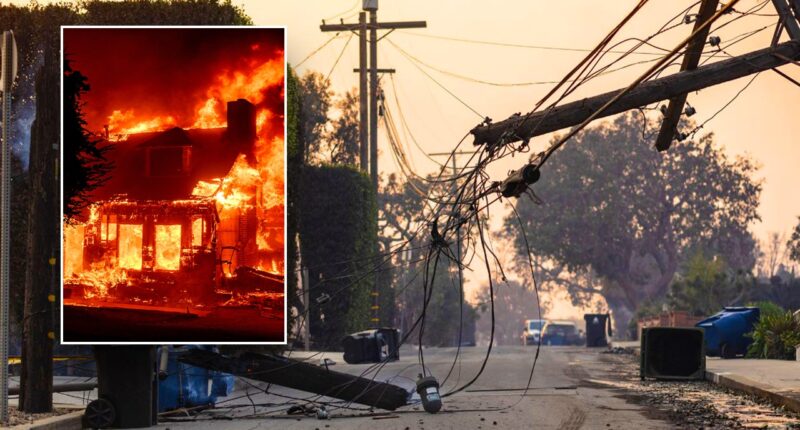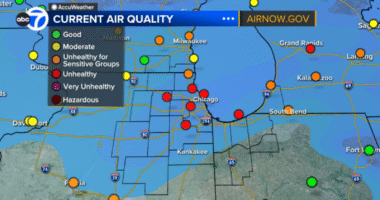According to a company that tracks electrical activity, there has been a significant rise in faults along the Los Angeles power grid in the same areas where three of this week’s major wildfires are currently burning.
Whisker Labs’ CEO, Bob Marshall, informed Fox News Digital that the company observed a notable increase in faults just hours prior to the Eaton, Palisades, and Hurst Fires.
Marshall explained that Whisker Labs utilizes a network of about 14,000 sensors, referred to as “ting” sensors, spread across Los Angeles. These sensors have the capability to detect and pinpoint faults caused by electrical arcs. By leveraging its sensor network in households, Whisker Labs is able to closely monitor the electric grid with exceptional accuracy.
Sparks from faults can fall to the ground and ignite vegetation, essentially setting a match on the landscape. High winds then carry the flames at rapid speeds.
Investigators have yet to determine what sparked the raging wildfires that have decimated large areas of Los Angeles, but a jump in faults on the power grid may serve as vital clues.
“Importantly, what we cannot say is one of those is whether one of those faults caused the fire. We don’t know that,” Marshall said. “What we know from our data is that there were increasing faults in the grid in the area around where those fires ignited.”
He said the data shows that the power was not shut off immediately when the faults were rising.
“But again, we can’t say definitively at all whether one of those faults caused a fire. I do want to be very, very clear about that,” he added.
Marshall said that Whisker Labs has had discussions with utility companies about using its data, but currently, the data is not being shared.
Right now, ting sensors notify homeowners of a surge in power so they can take preventative measures to prevent house fires. Marshall said the company has a network of about one million ting sensors across the U.S.
“A power surge can cause damage to appliances and devices. In the worst case, it can cause a fire in a home,” Marshall said.
He said the “smart and super sophisticated” technology can prevent 80% of potential house fires.

A home is engulfed in flames during the Eaton Fire in the Altadena area of Los Angeles County, California, on Jan. 8, 2025. (JOSH EDELSON/AFP via Getty Images)
When the sensor picks up a fault, the home sensor is notified via an app, and then they can arrange for an electrician to call and make the necessary fixes.
“We take 30 million electrical measurements every second. There’s AI (artificial intelligence) in the sensor, [and] we stream data to a cloud that is specifically designed to detect electrical faults inside of homes,” he continued. “And then the network of sensors detects faults on the grid because when there’s a fault on the grid it is simultaneously measured by many ting sensors in a community. So if there’s a fault in your home, that fault doesn’t propagate out to the whole community, we only detect it on one single thing sensor in your home.”
Meanwhile, the Los Angeles Department of Water and Power didn’t proactively turn off the power to mitigate the risk of starting a fire ahead of this week’s devastating wildfires, The Wall Street Journal reported Friday, citing regulatory filings.
The preventative measure is in place with every other big California power company after utilities have sparked wildfires in the past, the Journal reported.
An LADWP spokesperson told the Journal that they have other safety precautions in place, such as disabling technology that automatically restores power after an outage. She added that widespread preventative power outages could also be harmful to emergency services.
Fox News’ Brie Stimson contributed to this report.

















